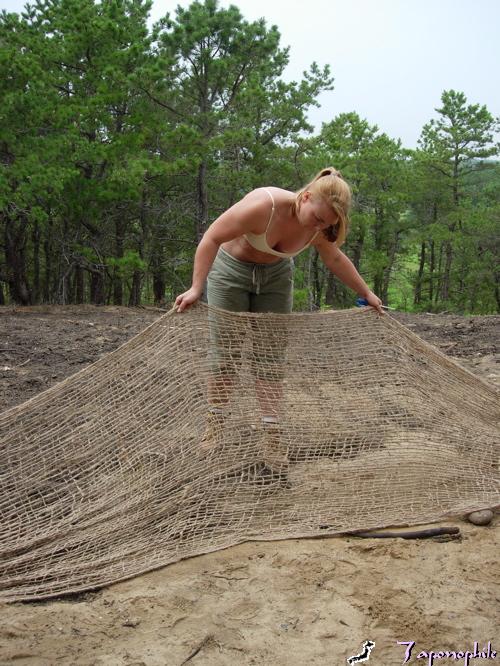Combining both traditional and innovative erosion control strategies, can successfully achieve zero discharge performance standards. Wind and water erosion can be managed with similar techniques because they are both fluids.
Publications:
Understanding the Coastal Process
Erosion control systems should always be designed for zero discharge.
Construction activity removes the natural vegetation which normally slows and infiltrates rainwater. Uncontrolled erosion depletes resources by transporting topsoil and subsoil down slope, creating gullies and smothering down slope and wetland resources. Properly installed erosion control systems will perform in compliance with Conservation Commission and Endangered Species permitting regulations.
Preventing and controlling erosion is a major plus for anyone building Green.
Smart Growth Techniques, Low Impact Design and Green Building systems all agree that erosion can easily be prevented with a few simple guidelines:First, design your site to prevent erosion. Reduce your construction envelope to minimize de-vegetation. Second, design with the natural flow of hydrology. Don't create problems from excess sheet flow discharge. Third, design different systems for different needs. Make your choices based on slope and contributing flow. Several basic tools are used to work with erosion control systems: heavy scissors, sharp knife, heavy hand maul, heavy duty stapler, tape measure, lawn edger tool.
Several basic components make up the majority of erosion control systems: Here are a few examples of the materials, systems, and techniques that we use.
EROSION CONTROL SYSTEM:
SILT FENCING WITH BIOLOGS
Bio logs are used together with silt fencing to slow down storm water, trapping silt and sediment. Longer sections of bio log/silt fence systems should always incorporate animal bypasses. These should overlap in an upslope direction, so the by pass can still function as erosion control.
Silt fence, a semi-permeable filter fabric which traps fine silt but allows water to seep through. 36 and 24 inch silt fencing is available. We only recommend 24 inch fencing for erosion control systems. The fencing comes with stapled stakes every 10-12 feet. We staple an extra stake in the middle of each section to create fabric tension which improves performance.
EROSION CONTROL SYSTEM
STRAW BALE SYSTEMS
EROSION CONTROL SYSTEM
SAND FENCING
Sand fencing prevents wind generated sand erosion by controlling wind speed. Fencing placement should be three to six feet apart for best performance. Fencing also generates sand deposition because when wind is slowed down, it drops the sand it is carrying. Fencing slats can be individually driven into the sand instead of using additional stakes.
Sand fencing prevents wind generated sand erosion by controlling wind speed. Fencing placement should be three to six feet apart for best performance. Fencing also generates sand deposition because when wind is slowed down, it drops the sand it is carrying. Fencing slats can be individually driven into the sand instead of using additional stakes.
We also use 4 foot high sand fencing to address human caused erosion on coastal banks.
EROSION CONTROL SYSTEMS:
COIR fiber rolls
Coconut husk fiber rolls prevent coastal erosion by absorbing wave energy. For more information regarding site specific erosion control options, contact Gordon at gordonsafeharbor@yahoo.com



























